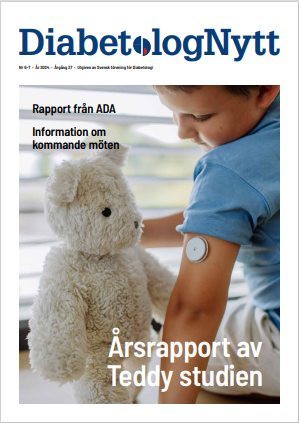Research finds brain differences tied to hypoglycemia unawareness. A small UK study in Diabetologia showed that men with type 1 diabetes and hypoglycemia unawareness had significantly less brain activity in regions associated with memory and emotional experience, an indication of their inability to recognize symptoms of hypoglycemia and to recall unpleasant experiences.
Parts of the brain have been identified that alter the capability of some people with type 1 diabetes to spot hypoglycemia, King’s College London scientists report.
Hypo unawareness, clinically known as Impaired Awareness of Hypoglycaemia (IAH), develops when a person with type 1 diabetes cannot identify symptoms of low blood sugar, leading to an increased risk of severe hypoglycemia.
The King’s College London researchers noted that conventional treatments have not focused on the emotional and cognitive elements of the brain’s functioning in hypo unawareness.
In a small study of 17 men with type 1 diabetes, eight of whom had hypo unawareness, tests showed those with IAH experienced significantly less brain activity in regions associated with emotional experience and memory. This meant they were not only unable to recognise hypo symptoms but also unable to recall past incidences as being unpleasant.
The researchers used a technique called Positron Emission Tomography where they radiolabelled water to spot changes in activity in the brain regionally, using radioactivity to measure changes in blood-flow. They then examined the participants as they experienced blood glucose levels, which were normal and low.
Lead author Professor Stephanie Amiel said: ”Severe hypoglycaemia is a life-threatening emergency and it, with IAH, can be devastating for people with type 1 diabetes and for their families.
”The brain imaging studies have helped us understand why about one in ten people with type 1 diabetes struggle so much with problematic hypoglycemia and have underpinned a research programme that has led us to a novel treatment with exciting potential to help these people. It may also have implications for other conditions where failure to experience symptoms leads people to recurrent severe exacerbations of disease.”
Professor Amiel and her team are now working on a study funded by the JDRF exploring a new treatment for IAH.
The study was published by the journal Diabetologia.
From www.diabetes.uk
Abstract
The impact of hypoglycaemia awareness status on regional brain responses to acute hypoglycaemia in men with type 1 diabetes
Abstract
Aims/hypothesis
Impaired awareness of hypoglycaemia (IAH) in type 1 diabetes increases the risk of severe hypoglycaemia sixfold and can be resistant to intervention. We explored the impact of IAH on central responses to hypoglycaemia to investigate the mechanisms underlying barriers to therapeutic intervention.
Methods
We conducted [15O]water positron emission tomography studies of regional brain perfusion during euglycaemia (target 5 mmol/l), hypoglycaemia (achieved level, 2.4 mmol/l) and recovery (target 5 mmol/l) in 17 men with type 1 diabetes: eight with IAH, and nine with intact hypoglycaemia awareness (HA).
Results
Hypoglycaemia with HA was associated with increased activation in brain regions including the thalamus, insula, globus pallidus (GP), anterior cingulate cortex (ACC), orbital cortex, dorsolateral frontal (DLF) cortex, angular gyrus and amygdala; deactivation occurred in the temporal and parahippocampal regions. IAH was associated with reduced catecholamine and symptom responses to hypoglycaemia vs HA (incremental AUC: autonomic scores, 26.2 ± 35.5 vs 422.7 ± 237.1; neuroglycopenic scores, 34.8 ± 88.8 vs 478.9 ± 311.1; both p < 0.002). There were subtle differences (p < 0.005, k ≥ 50 voxels) in brain activation at hypoglycaemia, including early differences in the right central operculum, bilateral medial orbital (MO) cortex, and left posterior DLF cortex, with additional differences in the ACC, right GP and post- and pre-central gyri in established hypoglycaemia, and lack of deactivation in temporal regions in established hypoglycaemia.
Conclusions/interpretation
Differences in activation in the post- and pre-central gyri may be expected in people with reduced subjective responses to hypoglycaemia. Alterations in the activity of regions involved in the drive to eat (operculum), emotional salience (MO cortex), aversion (GP) and recall (temporal) suggest differences in the perceived importance and urgency of responses to hypoglycaemia in IAH compared with HA, which may be key to the persistence of the condition.
Nyhetsinfo
www red DiabetologNytt
Träffar: 1





